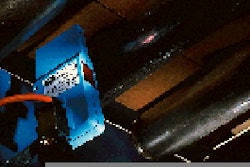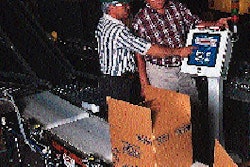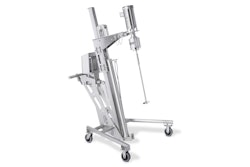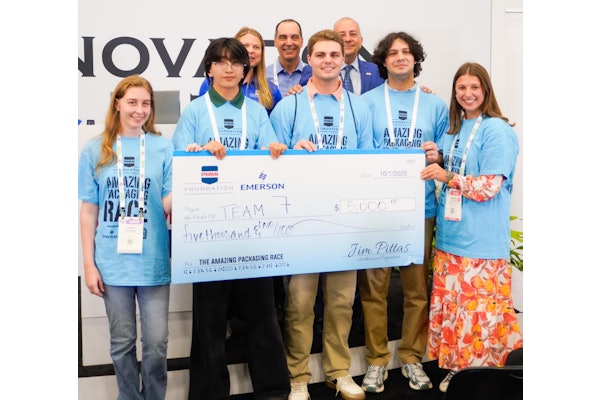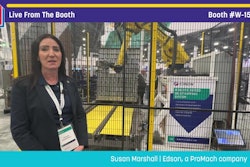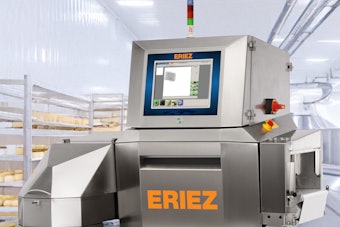The United States, Europe and the Far East probably spring to mind first when one thinks about strong packaging markets around the world. Yet in the future, much of packaging's global growth may be in other regions, in countries that the investment community refers to as "emerging markets." Egypt is such a country. In the Egyptian city of Housh Eysa is a company called El Jawhara, a firm that just entered the salty snack food business in 1995. In less than two years it has grown into the second-largest producer of these products, capturing about a 30% share of the market in this North African country of nearly 60 million people. Reaching that status is impressive, even if it doesn't quite compare to constructing Egypt's Great Pyramids. In sheer financial numbers, Egypt's snack food market pales in comparison to the U.S., but bear in mind that this is a fairly new offering in a country with a population about one-fifth that of the U.S. Also, a substantial amount of the bagged snacks produced by El Jawhara sell for what converts to mere pennies in the U.S. "Before 1995 we were not in the snack food market," notes El Jawhara's technical manager Belal Hagag. "We are [known as] the largest tea bagging company in our country. But with the snack food market continuing to grow quickly every year, we made the decision to enter it." Hagag is especially optimistic when it comes to potential potato chip sales. To take a bite out of this market, El Jawhara built a new plant in Housh Eysa, located southeast of Alexandria and about 100 miles from Cairo, the nation's capitol. Between early 1995 when the plant opened and late 1996, the company made a major investment in packaging equipment from The Woodman Company (Decatur, GA). El Jawhara uses 16 Woodman VT510 twin-tube volumetric vertical form/fill/seal machines for its extruded corn and rice snacks, which Hagag says presently account for about 80% of the new plant's production. These snacks are fairly sturdy, consistently shaped, and are relatively inexpensive. Those characteristics are well-suited to the volumetric fillers that move the product mechanically through the filling process. The twin-tube volumetric fillers produce bags containing 10- or 16-g quantities, at speeds to 75/min/tube. Potato chips, on the other hand, are more costly than extruded snacks. They're also more fragile, with less consistency in shape. That combination makes them a natural for Woodman's Gemini twin-tube vf/f/s machines. Instead of a mechanical system, gentle vibration is used to convey the chips to the seven vf/f/s systems employed by El Jawhara. Each Gemini vf/f/s machine is integrated with a Woodman Commander 216 multi-head weigher. Each integrated weigher/bagger produces primarily 25-g bags of potato chips, as well as 90- and 180-g "family" bags. For the 25-g size, each tube produces up to 70 bags/ min, or 140 bpm on each system. The Gemini and VTS10 systems run as much as six days a week, three shifts per day. Besides their output, the machines use minimal floorspace, another advantage for El Jawhara. Chip filling process Though extruded snacks account for the majority of El Jawhara's volume at the plant, there are factors that make the weigher/bagger equipment especially interesting. First, these machines are a bit more sophisticated than the volumetric fillers in terms of their electronics and computer controls. These controls are becoming more prevalent on packaging lines every day here in the U.S. Secondly, there's enormous sales potential in Egypt for potato chips. Potatoes are brought to the plant's first floor for processing. Chips are packaged on the second floor, while extruded snacks like cheese-flavored corn curls are packed on the third floor. Hagag says that pricey real estate in this area of Egypt makes it more economical for factories to build upward rather than outward. After potatoes are sliced, washed and fried, a product distribution system is used to deliver them to the packaging line. This system is supplied by KMG Systems Ltd. (Bedfordshire, U.K.). A bucket elevator system carries chips nearly 40 feet from the processing area, then through the ceiling to the second-floor packaging area. Potatoes are seasoned prior to filling. El Jawhara sells chips in chicken, cheese, onion, tomato, salt and vinegar, pepper and lemon, kebab, and ketchup varieties. The bucket elevators carry chips to a primary feed conveyor that transfers the chips to vibratory conveyors, each feeding a central distribution cone. The cone rotates clockwise and counter-clockwise to evenly distribute chips to radial feeder pans that are mounted in fixed positions around the cone. The radial feeder pans vibrate to move chips into 16 scale hoppers. These hoppers hold the product while load cells measure the product weight within. The weight in each hopper registers within a central processing unit before the scale hoppers release product into bin hoppers positioned directly underneath the scale hoppers. The CPU selects the appropriate weight combination from these bins to accurately meet the designated package weight. The units are designed so that eight of the scale hoppers are used to deliver chips to one of the Gemini's twin filling tubes, while the remaining eight scales supply the second filling tube. Product descends from the bin hoppers through a collation funnel into the appropriate filling tube. Like the scaling system, the vf/f/s equipment is also microprocessor-controlled. Chips descend into the bottom-sealed film tube. Film is delivered from a computer-controlled unwind through a series of dancer rollers over a forming collar. El Jawhara relies on several local film suppliers, but the typical 40-micron (1.6 mil) structure is a two-layer lamination of reverse-printed oriented polypropylene and metallized PP. The package graphics are appealing by any country's standards, with copy printed in English and Arabic. Film is formed into a tube around a forming collar. Heat is used to seal the two film edges into a fin-seal. A bottom cross-seal is executed by sealing jaws. A timed blast of air cushions the tube as product is dumped into the bag. The sealing jaws then make a second cross-seal that seals the top of the filled bag while forming the bottom seal for the subsequent bag. The Woodman systems are designed with an unusual stripping method that clears out any small chip pieces from the seal area just before sealing. Once sealed and cut from the film tube, filled bags discharge onto an incline conveyor that carries bags to an accumulation table. Operators hand-pack bags into corrugated cases. Filled cases are brought to warehouse areas for storage. Product is distributed by van or truck within Egypt. For exports to neighboring Gulf states such as Saudi Arabia or Kuwait, as well as to Russia and Sri Lanka, El Jawhara relies on both truck and sea shipments. Global search El Jawhara initially purchased a VT510 in late '94. Hagag says the company was so pleased with that first unit that within three months it ordered a second machine. By last August, it had 16 of them producing extruded snacks, as well as the seven integrated weigher/baggers for potato chips. But how did this Middle East company come to select packaging machinery from Decatur, GA? "We looked all over the world before making our decision," Hagag says. "We visited many plants in Germany, the United States and England. We noticed that many of the factories that packaged specifically for the snack market used Woodman equipment. We asked personnel these factories about the equipment and they gave us nothing but good news." El Jawhara's search for other equipment within the new plant was also global in scope. Besides installing U.K.-based KMG's product distribution system, a Swedish engineering firm helped train operators to set up the plant for snack food production. Another Swedish supplier installed processing equipment. The Woodman machinery gives El Jawhara a single-source supplier for packaging equipment, something the Egyptian company sought from the start. "Our experience with the equipment has been excellent to date. We have low product giveaway and material waste," says Hagag. He points out, "We produce high volumes for our country, and these machines allow us to do that [cost] effectively. We work with Woodman's office in England and they've provided good after-sales service as well. On the few occasions when we have needed assistance, Woodman has delivered swiftly." That combination of attributes is hard to beat, no matter where in the world you're packaging.





